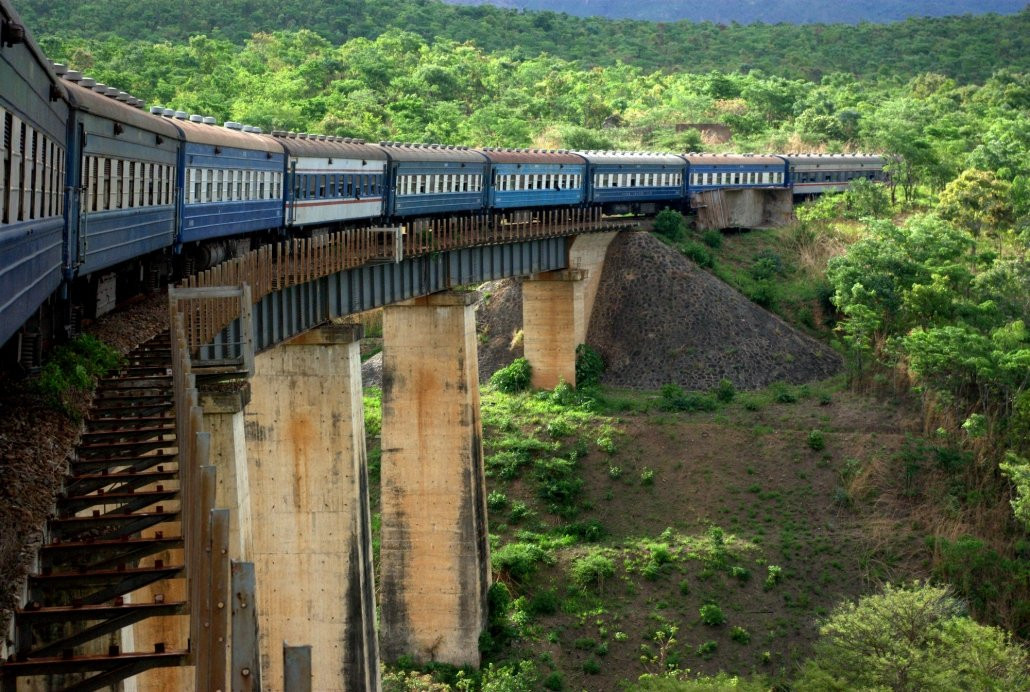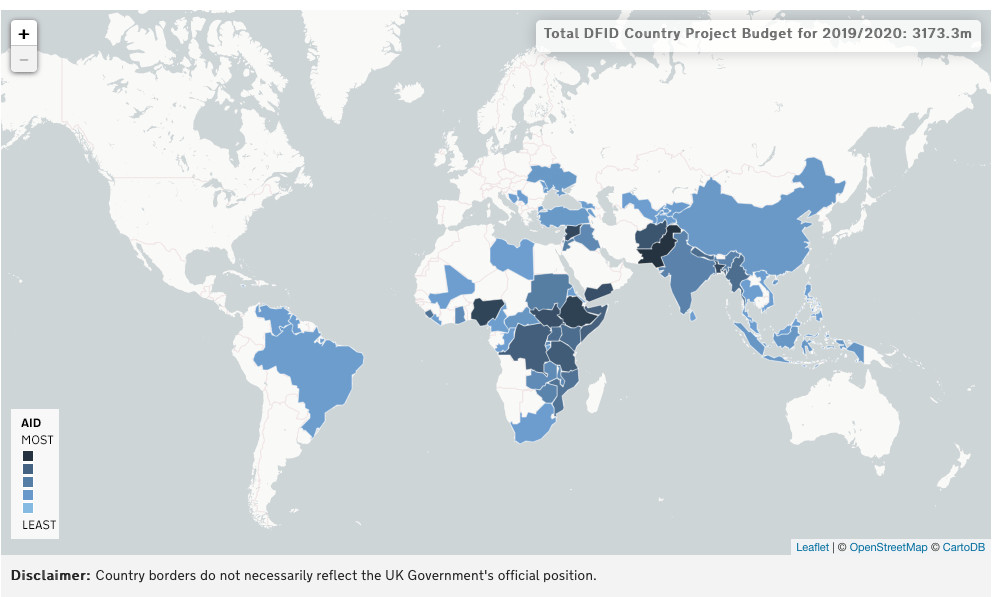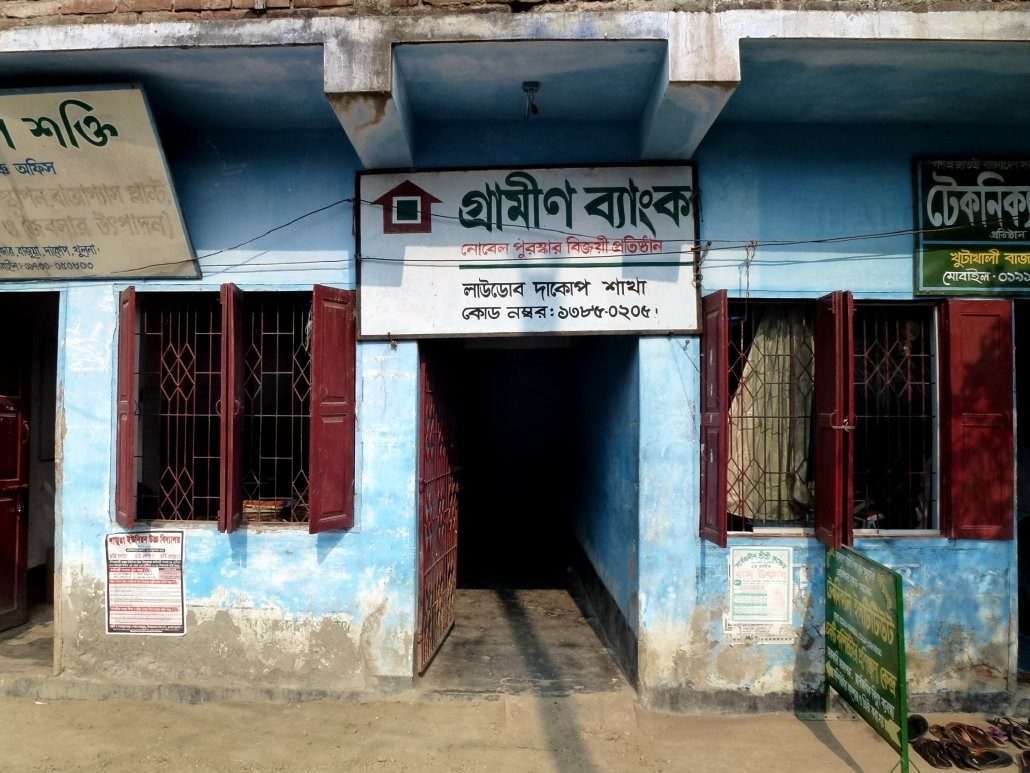Tourism can significantly reduce the development gap by injecting foreign currency, improving infrastructure, and creating employment opportunities, and SIXT.VN can help you explore these opportunities in Vietnam. Tourism development fosters economic growth and improves living standards in developing countries, so partnering with SIXT.VN ensures a seamless and enriching travel experience, further contributing to sustainable development and bridging the development gap through responsible travel practices.
1. How Does Tourism Investment Bridge the Development Gap?
Tourism investment bridges the development gap by enhancing infrastructure, services, and creating employment opportunities. Investments in tourism projects improve infrastructure like roads, airports, and utilities, fostering economic growth, so SIXT.VN can help facilitate these investments by connecting travelers to local businesses and creating opportunities for sustainable tourism development.
Tourism investments often lead to:
- Infrastructure Development: Improved transportation networks, accommodation facilities, and utilities.
- Service Enhancement: Better healthcare, sanitation, and hospitality services.
- Job Creation: Employment in hotels, restaurants, tour operations, and related sectors.
- Revenue Generation: Increased tax revenues for local governments, funding public services.
According to the World Tourism Organization (UNWTO), tourism is a significant driver of economic growth, especially in developing countries. In 2019, international tourism receipts reached $1.7 trillion globally, with a substantial portion benefiting low-income countries through direct and indirect contributions to their GDP. These investments can support the development of local communities by paying taxes, such as corporate income tax, personal income tax, value-added tax (VAT), and tourism tax. This leads to the creation of educational opportunities, as it allows local governments to invest in schools, training programs, and infrastructure. Additionally, it supports healthcare by improving the quality of healthcare facilities and services, ensuring access to medical care for local communities.
 Infrastructure upgrades boost tourism, which in turn creates jobs and revenue
Infrastructure upgrades boost tourism, which in turn creates jobs and revenue
2. How Do Industrial Development and Tourism Collaboratively Reduce the Development Gap?
Industrial development and tourism collaboratively reduce the development gap by creating diverse employment opportunities and increasing individual wealth through tax contributions, which can be greatly enhanced with the support of SIXT.VN. Industrial projects generate jobs in construction and manufacturing, while tourism offers service sector positions, leading to improved healthcare, education, and infrastructure through increased tax revenues.
The synergy between industrial development and tourism includes:
- Employment Diversification: Reducing reliance on single industries.
- Increased Income: Higher wages leading to better living standards.
- Tax Revenue: Funding public services such as healthcare and education.
- Infrastructure Synergies: Industrial development supporting tourism infrastructure and vice versa.
According to a report by the United Nations Conference on Trade and Development (UNCTAD), tourism and industrial development can create a multiplier effect, boosting overall economic growth. For instance, the development of local industries to supply goods and services to the tourism sector can enhance economic resilience and reduce dependence on imports. Furthermore, the increase in individual wealth through employment in both sectors leads to greater tax revenues, enabling governments to invest in critical public services. For instance, the construction of new roads and highways for industrial development can also improve access to tourist destinations, fostering further growth in the tourism sector.
3. What Role Does Aid Play in Narrowing the Development Gap Through Tourism?
Aid plays a crucial role in narrowing the development gap through tourism by providing financial assistance and supporting development projects, and SIXT.VN can help ensure that aid is directed effectively to sustainable tourism initiatives. Long-term aid supports projects like improving sanitation, water supply, and education, while short-term aid addresses immediate needs during natural disasters, fostering resilient tourism infrastructure.
Key aspects of aid in tourism development:
- Financial Assistance: Grants and loans for tourism infrastructure and development projects.
- Technical Support: Expertise in sustainable tourism practices and management.
- Capacity Building: Training programs for local communities to participate in the tourism sector.
- Emergency Relief: Support for tourism-dependent communities affected by disasters.
The Organization for Economic Co-operation and Development (OECD) reports that targeted aid to the tourism sector can have a significant impact on poverty reduction and economic development. For example, aid projects that focus on developing eco-tourism in rural areas can provide alternative livelihoods for local communities, reducing their dependence on unsustainable practices like deforestation. Furthermore, aid can support the development of tourism infrastructure that benefits both tourists and local residents, such as improved water and sanitation systems. By working with SIXT.VN, aid organizations can ensure that tourism projects are implemented efficiently and sustainably, maximizing their impact on the development gap.
 UK Aid supports various development projects globally
UK Aid supports various development projects globally
4. How Can Intermediate Technology Contribute to Reducing the Development Gap in Tourism?
Intermediate technology contributes to reducing the development gap in tourism by supporting local development projects and improving essential services, and SIXT.VN can promote the adoption of these technologies in the tourism sector. Projects aimed at enhancing water supplies, health, and agriculture at the local level directly benefit tourism-dependent communities.
Benefits of intermediate technology in tourism:
- Water Management: Affordable water purification systems for clean drinking water.
- Renewable Energy: Solar power for lighting and heating in remote accommodations.
- Sustainable Agriculture: Improved farming techniques to supply local restaurants.
- Waste Management: Eco-friendly waste disposal systems to protect natural environments.
A study by the United Nations Environment Programme (UNEP) highlights the role of intermediate technology in promoting sustainable tourism. For instance, the use of solar-powered water heaters in hotels and guesthouses can significantly reduce energy consumption and lower operating costs. Similarly, the implementation of rainwater harvesting systems can provide a reliable water supply for tourism facilities in water-scarce regions. By partnering with SIXT.VN, local tourism businesses can access the resources and expertise needed to implement these technologies, enhancing their sustainability and competitiveness.
5. How Does Fair Trade in Tourism Benefit Local Communities and Reduce Inequality?
Fair trade in tourism benefits local communities and reduces inequality by ensuring fair prices for products and services, and SIXT.VN can facilitate these ethical practices within the tourism industry. Fair trade promotes fair wages, safe working conditions, and community investment, fostering sustainable economic development.
Key elements of fair trade in tourism:
- Fair Pricing: Ensuring local artisans and producers receive fair compensation.
- Safe Working Conditions: Promoting ethical labor practices in tourism businesses.
- Community Investment: Supporting local development projects through tourism revenue.
- Cultural Preservation: Protecting and promoting local traditions and heritage.
According to Fair Trade Tourism, fair trade practices in tourism can lead to significant improvements in the livelihoods of local communities. For example, hotels and tour operators that source goods and services from local producers can help create jobs and stimulate economic growth in marginalized areas. Additionally, fair trade tourism initiatives often prioritize environmental sustainability, ensuring that tourism activities do not harm the natural environment or deplete local resources. By choosing to support fair trade tourism businesses through SIXT.VN, travelers can contribute to a more equitable and sustainable tourism industry.
6. How Does Debt Relief Aid Tourism Development in Developing Countries?
Debt relief aids tourism development in developing countries by freeing up financial resources for investment in critical infrastructure and services, and SIXT.VN can help ensure these resources are used effectively. Cancelling debt allows governments to allocate more funds to projects like road construction, healthcare, and education, which directly benefit the tourism sector.
Impacts of debt relief on tourism:
- Infrastructure Investment: Funds for upgrading airports, roads, and utilities.
- Public Services: Improved healthcare and education for tourism workers and communities.
- Economic Stability: Creating a more stable environment for tourism businesses to thrive.
- Poverty Reduction: Reducing poverty and improving living standards through tourism.
The International Monetary Fund (IMF) has recognized the role of debt relief in promoting sustainable development, including tourism. By reducing the burden of debt, countries can invest more in infrastructure and services that support tourism, such as improved transportation networks and healthcare facilities. This can lead to increased tourism revenues, which in turn can help further reduce poverty and stimulate economic growth. By partnering with SIXT.VN, governments can ensure that debt relief funds are used strategically to maximize the benefits for the tourism sector and local communities.
7. How Do Micro-Finance Loans Empower Local Entrepreneurs in the Tourism Sector?
Micro-finance loans empower local entrepreneurs in the tourism sector by providing financial support to start and expand small businesses, and SIXT.VN can connect these entrepreneurs with a broader customer base. Successful businesses create jobs, increase incomes, and foster local economic development.
Benefits of micro-finance in tourism:
- Business Creation: Enabling local entrepreneurs to start tourism-related businesses.
- Job Creation: Providing employment opportunities for local residents.
- Income Generation: Increasing household incomes and improving living standards.
- Community Development: Stimulating local economic growth and reducing poverty.
A study by the Grameen Foundation has shown that micro-finance loans can have a transformative impact on the lives of entrepreneurs in developing countries. By providing access to credit, micro-finance institutions enable individuals to start and grow small businesses that generate income and create jobs. In the tourism sector, micro-finance loans can be used to finance a wide range of activities, from setting up small guesthouses and restaurants to providing tour guiding services and producing handicrafts. By partnering with SIXT.VN, these entrepreneurs can reach a wider audience of travelers and increase their business opportunities.
 Microloans in Grameen Bank helps with local business and economics
Microloans in Grameen Bank helps with local business and economics
8. What Are Some Specific Examples of Tourism Reducing the Development Gap?
Specific examples of tourism reducing the development gap include community-based tourism initiatives, ecotourism projects, and cultural tourism programs, all of which can be enhanced through partnerships with SIXT.VN. These initiatives generate income, create jobs, and promote sustainable development in marginalized communities.
Examples of successful tourism projects:
- Community-Based Tourism: Local communities managing and benefiting from tourism activities.
- Ecotourism: Sustainable tourism that protects natural environments and supports conservation.
- Cultural Tourism: Promoting and preserving local traditions and heritage.
- Adventure Tourism: Offering unique experiences while supporting local economies.
According to a report by the World Bank, community-based tourism in countries like Costa Rica and Nepal has been successful in reducing poverty and promoting sustainable development. In these projects, local communities manage and control tourism activities, ensuring that the benefits accrue directly to them. Ecotourism projects in countries like Rwanda and Botswana have also been successful in generating revenue for conservation efforts and providing alternative livelihoods for local communities. By working with SIXT.VN, these projects can reach a wider audience of travelers and increase their impact on the development gap.
9. How Can SIXT.VN Contribute to Sustainable Tourism Development in Vietnam?
SIXT.VN can contribute to sustainable tourism development in Vietnam by promoting responsible travel practices, supporting local businesses, and minimizing the environmental impact of tourism. By offering a range of services, SIXT.VN ensures that travelers have access to convenient and sustainable travel options.
Ways SIXT.VN supports sustainable tourism:
- Promoting Eco-Friendly Accommodations: Offering options that prioritize sustainability.
- Supporting Local Businesses: Partnering with local tour operators, restaurants, and artisans.
- Encouraging Responsible Travel: Educating travelers about sustainable practices.
- Minimizing Environmental Impact: Promoting eco-friendly transportation and waste reduction.
SIXT.VN’s commitment to sustainable tourism aligns with the goals of the Vietnam National Administration of Tourism (VNAT), which aims to promote responsible and sustainable tourism practices throughout the country. By partnering with SIXT.VN, VNAT can reach a wider audience of travelers and promote the benefits of sustainable tourism. SIXT.VN can also work with local communities to develop and promote community-based tourism initiatives, ensuring that tourism benefits local residents and contributes to poverty reduction. This includes investing in projects that focus on renewable energy, water conservation, and waste management, minimizing the environmental impact of tourism activities.
10. What Are the Key Performance Indicators (KPIs) for Measuring the Impact of Tourism on the Development Gap?
Key Performance Indicators (KPIs) for measuring the impact of tourism on the development gap include income levels, employment rates, poverty rates, and environmental sustainability, and SIXT.VN can help track and improve these indicators. These metrics provide a comprehensive understanding of how tourism contributes to economic and social development.
Important KPIs for assessing tourism’s impact:
- Income Levels: Measuring the increase in income for local residents due to tourism.
- Employment Rates: Tracking the number of jobs created in the tourism sector.
- Poverty Rates: Monitoring the reduction in poverty due to tourism activities.
- Environmental Sustainability: Assessing the impact of tourism on natural resources and ecosystems.
According to the United Nations Sustainable Development Goals (SDGs), sustainable tourism has the potential to contribute to a wide range of development goals, including poverty reduction, economic growth, and environmental protection. By tracking these KPIs, policymakers and tourism businesses can assess the impact of tourism on the development gap and identify areas for improvement. This includes supporting local businesses, such as tour operators, restaurants, and artisans, by promoting their services and products to travelers. This ensures that tourism revenue is distributed more equitably throughout the community.
Ready to Experience the Best of Vietnam with SIXT.VN?
Don’t let the challenges of planning a trip to Vietnam hold you back. SIXT.VN offers a range of services designed to make your travel experience seamless and enjoyable. From airport transfers and hotel bookings to tour packages and travel advice, we have everything you need to explore Vietnam with confidence.
- Effortless Planning: Let SIXT.VN handle the details, so you can focus on enjoying your trip.
- Reliable Services: Trust our experienced team to provide top-notch service and support.
- Local Expertise: Benefit from our in-depth knowledge of Vietnam and its hidden gems.
- Sustainable Travel: Support local communities and minimize your environmental impact with our responsible tourism practices.
Contact SIXT.VN Today!
- Address: 260 Cau Giay, Hanoi, Vietnam
- Hotline/Whatsapp: +84 986 244 358
- Website: SIXT.VN
Frequently Asked Questions (FAQs) About Tourism and the Development Gap
-
What is the development gap?
The development gap is the disparity in economic and social well-being between the world’s richest and poorest countries. -
How does tourism help reduce the development gap?
Tourism can reduce the development gap by generating income, creating jobs, improving infrastructure, and promoting sustainable development. -
What is sustainable tourism?
Sustainable tourism is tourism that minimizes its environmental impact, respects local cultures, and benefits local communities economically and socially. -
What role does community-based tourism play in reducing the development gap?
Community-based tourism empowers local communities by allowing them to manage and benefit directly from tourism activities, fostering economic development and cultural preservation. -
How can travelers support sustainable tourism in developing countries?
Travelers can support sustainable tourism by choosing eco-friendly accommodations, supporting local businesses, respecting local cultures, and minimizing their environmental impact. -
What are some examples of successful tourism projects that have reduced the development gap?
Examples include community-based tourism initiatives in Costa Rica, ecotourism projects in Rwanda, and cultural tourism programs in Nepal. -
How does SIXT.VN contribute to sustainable tourism in Vietnam?
SIXT.VN promotes responsible travel practices, supports local businesses, and minimizes the environmental impact of tourism by offering a range of sustainable travel options. -
What are the key performance indicators (KPIs) for measuring the impact of tourism on the development gap?
Key KPIs include income levels, employment rates, poverty rates, and environmental sustainability. -
How can debt relief aid tourism development in developing countries?
Debt relief frees up financial resources for investment in critical infrastructure and services, such as roads, airports, and healthcare facilities, which directly benefit the tourism sector. -
How do micro-finance loans empower local entrepreneurs in the tourism sector?
Micro-finance loans provide financial support to start and expand small businesses, creating jobs, increasing incomes, and fostering local economic development in the tourism sector.



